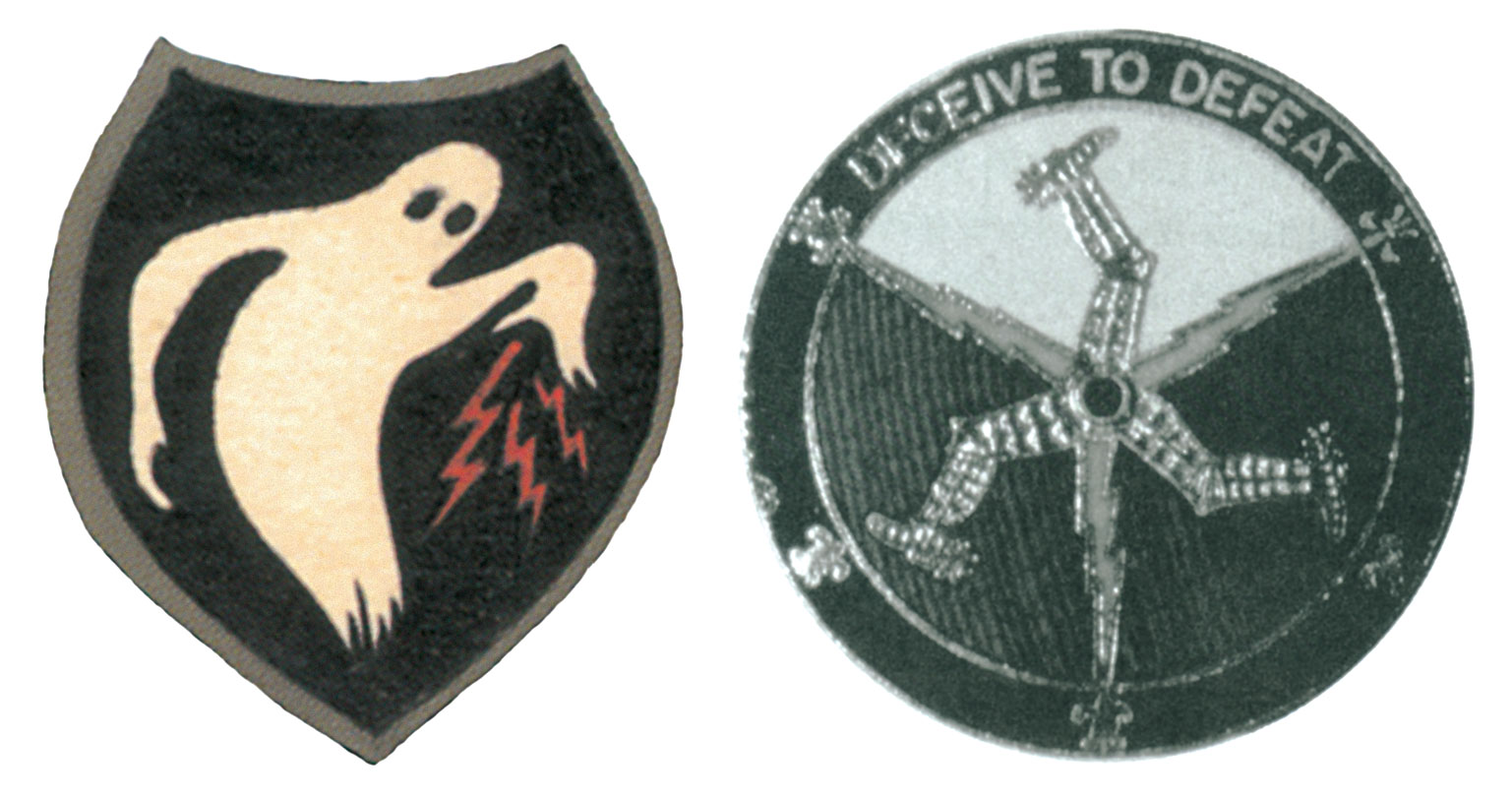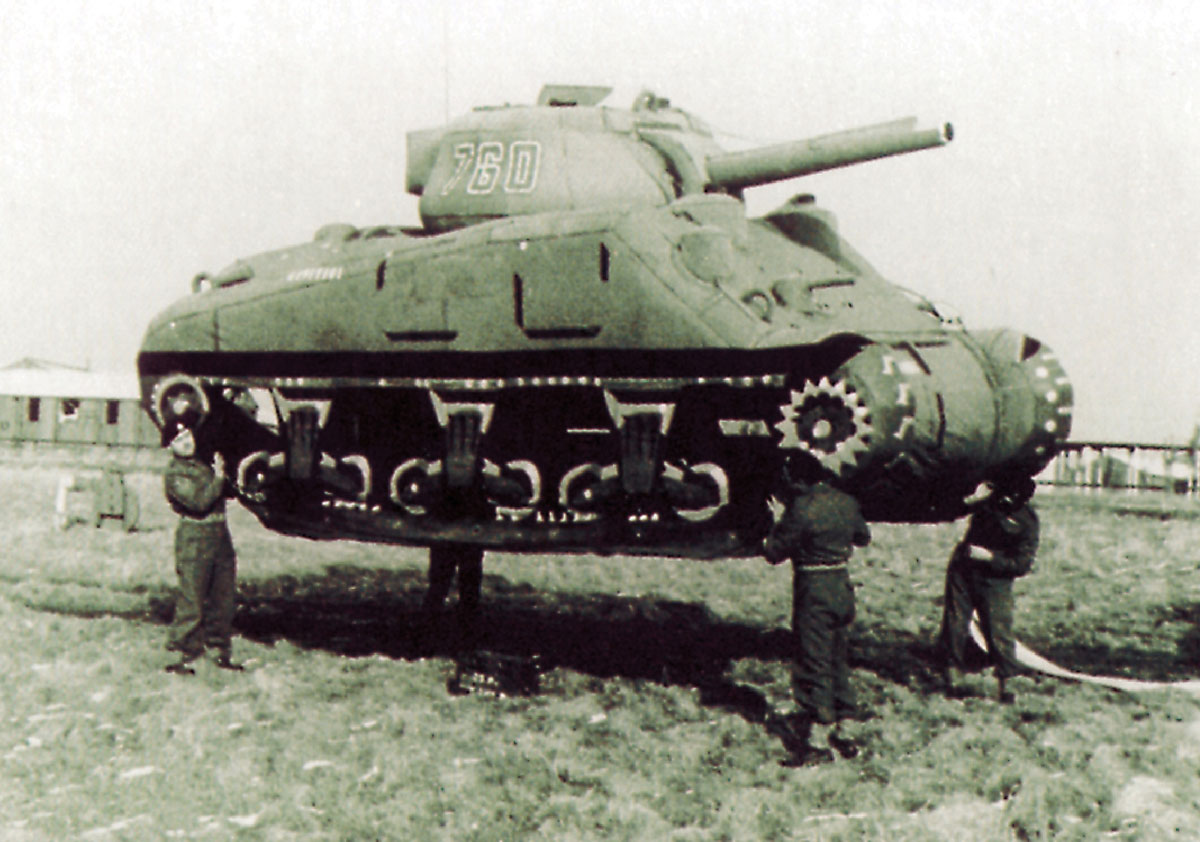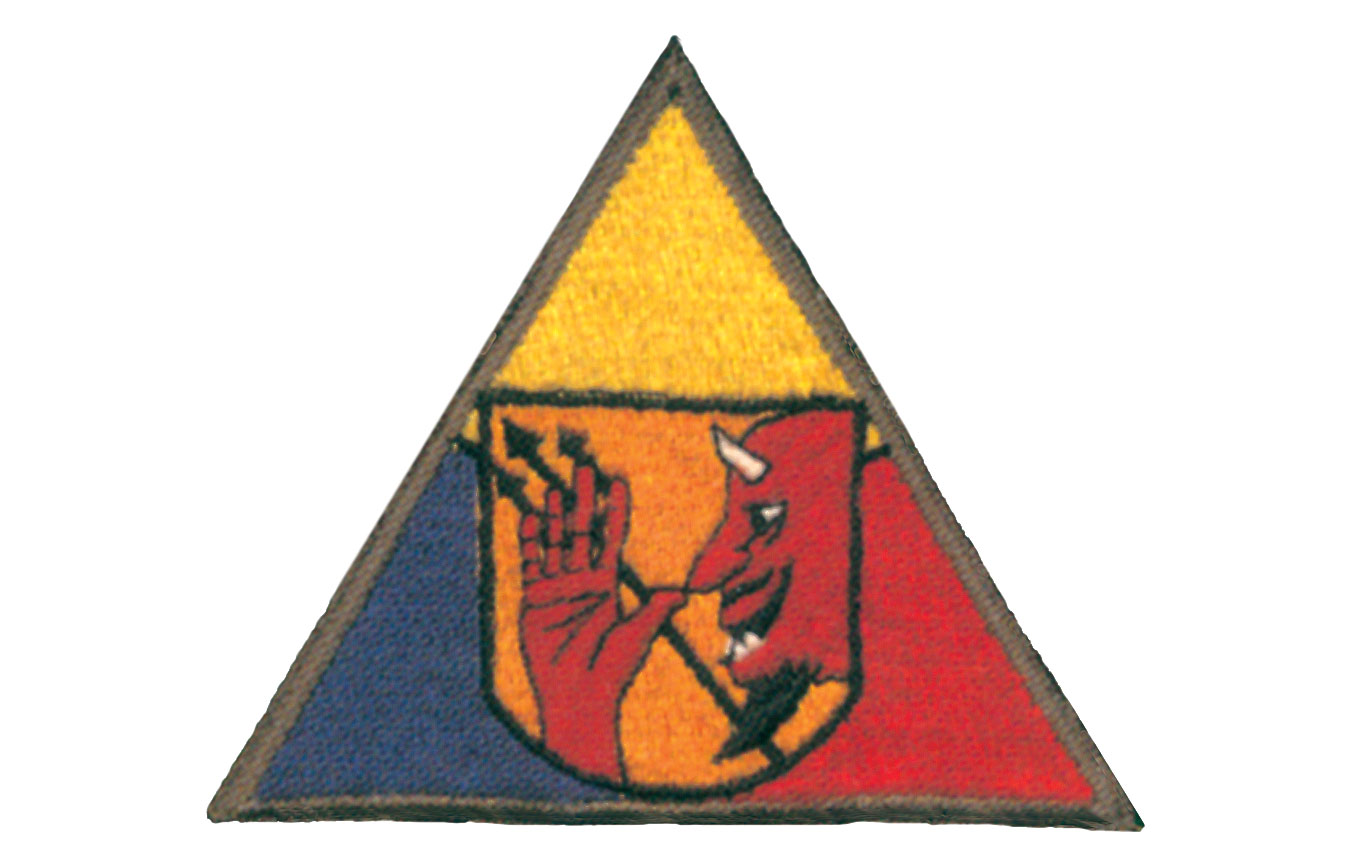Edison’s Warriors
Deceive to defeat
Christoph Cox
Real security can only be attained in the long run through confusion.
—Hilton Howell Railey, commander of the Army
Experimental Station[1]
Simulantur quae non sunt. Quae sunt vero dissimulantur.
—Motto of the 23rd Special Troops[2]
In “The Invisible Generation,” an experimental text from 1962, William S. Burroughs unveiled a proposal to unleash urban mayhem via the use of portable tape recorders. “Now consider the harm that can be done and has been done when recording and playback is expertly carried out in such a way that the people affected do not know what is happening,” he wrote. “Bands of irresponsible youths with tape recorders playing back traffic sounds that confuse motorists,” Burroughs gleefully imagined, could incite “riots and demonstrations to order.”[3]
Championing the productive (and destructive) powers of portable audio, “The Invisible Generation” is an emblematic text in the history of sound art and DJ culture. Yet, nearly 20 years earlier, Burroughs’s vision had already been conceived and deployed by none other than the United States Army, whose “ghost army,” the 23rd Special Troops, included several units dedicated to “sonic deception” and its results: enemy confusion and carnage.[4]

The first division in American Armed Forces history assigned exclusively to camouflage and deception, the 23rd was a military oddity. Despite the centrality of deception in the history of warfare from the Trojan Horse on, soldiers drilled in the West Point code of duty, honor, trust, and integrity were ill-suited to a life of simulation and dissimulation; and American officers tended to dismiss deceptive tactics as underhanded, a sign of weakness in every sense.[5] It’s not surprising, then, that the 23rd consisted primarily of a population with an occupational predisposition to deception, invention, and fabrication: artists. Actors, painters, graphic designers, set designers, fashion designers, and special effects experts (among them Ellsworth Kelly, Bill Blass, Art Kane, and George Diestel) were recruited from New York art schools and Hollywood studios to paint camouflage, build inflatable rubber guns and tanks, set off fake explosions, and publicly impersonate officers and soldiers from other divisions.
At the helm were two high-profile hucksters: Hollywood heartthrob Douglas Fairbanks, Jr. and public relations genius Hilton Howell Railey, who had discovered Amelia Earhart, attempted to raise the sunken Lusitania, and assisted Admiral Byrd in his expedition to the Antarctic. It was Fairbanks who was responsible for marketing “sonic deception” to America’s military brass. In the early 1940s, a family friend, Lord Louis Mountbatten, told Fairbanks about a secret British unit, based in a castle in Scotland, which was experimenting with sound effects, broadcasting recordings of tanks, aircraft, armored cars, and soldiers’ voices under the cover of fog or smoke screens. The British had already experimented with sonic tactics in the North African desert, hiring an Egyptian film company to broadcast sound effects in an effort to confuse the Italians and Germans. Keen on selling sonic deception to the US Army and Navy, Mountbatten trained Fairbanks in the practice of audio warfare and sent him on missions into occupied France.
Returning to the US in 1942, Fairbanks eventually convinced the Navy to set up a special deception unit dubbed the “Beach Jumpers.” At the BJ’s camp in Virginia, Hollywood special effects expert Fletcher Stevens gave lessons in pyrotechnics. Fairbanks lectured on the use of smoke screens and dummy paratroopers. And acoustical engineer Harold Burris-Meyer—who had recently developed the stereo sound system for Disney’s Fantasia—briefed the troops on state-of-the-art tactics of audio wizardry and sound camouflage.
Burris-Meyer’s early projects were hilariously low-tech. Impressed by the terrifying sirens used on German planes during bombing raids, he attempted to simulate the experience by tossing bottles out of an airplane, hoping that the air moving across the mouths of the bottles would produce an eerie whine. When the bottles fell silently to the ground, Burris-Meyer opted for a more high-tech approach.
Before the arrival of sound recording, sonic tactics had little role to play in military deception. Soldiers could set off decoy explosions or use noise to deceive the enemy about the size of an invading force. But Edison’s invention of the phonograph in 1877 and the subsequent development of wire and tape recorders in the early 20th century marked a break in the history of military deception analogous to the shift from silent to sound film. It’s fitting, then, that sonic deception was brought to the Armed Forces by Fairbanks, Jr., whose film career is distinguished from his father’s—silent film star Douglas Fairbanks, Sr.—by the advent of sound cinema.
The ear is deceived more readily than the eye. Passive and reactive, its most primitive function is to alert the creature to impending danger. And, unlike seeing, hearing is immersive and communal. Whether or not we want to, we hear from all directions at once. Hence, without visual evidence of the source, the ear easily mistakes the copy for the original, Memorex for the live event. As the National Defense Research Committee put it in its report “Sonic Deception: The Reproduction, Transmission, and Reception of Deceptive Sounds,” “An observer, under the strain of an impending attack and under conditions of poor visibility, such as moonlight or dawn, will transform a suggestive noise, faintly heard, into a strong illusion of a concentration of enemy forces and may firmly believe that he sees as well as hears them.”[6]
Exploiting these sensory characteristics and the new art and science of sound recording, Fairbanks and Burris-Meyer set to work perfecting a strategy for sonic deception known as Project 17:3-1: “The Physiological and Psychological Effects of Sound on Men in Warfare.” They recruited Harvey Fletcher, director of acoustic research at New Jersey’s Bell Telephone Labs and an inventor who, in the 1920s, had patented stereo headphones and an early hearing aid. The crew began work in February of 1942, and, by the fall of that year, were ready for a test run.

On the night of 27 October, a fleet of specially-outfitted fishing boats followed Navy and Coast Guard vessels out of New York harbor toward the Jersey shore. Three hundred infantrymen waited on the beach at Sandy Hook, expecting an attack but not knowing from which direction it would come. The fishing boats anchored at the south end of the beach, hidden behind a smokescreen dropped by overhead planes. Tossed about by choppy seas, crewmen laid commercial sound-effects records on portable phonographs and blasted them through 500-watt amplifiers and public address speakers. Though the rough seas caused the needles to skip about on the records, the beach troops were fooled. Their commander sent them to the southern flank, while the amphibious troops landed from the north. Watching the show from the Dixonia, a luxury yacht loaned by the millionaire Walgreen family, Fairbanks was gleaming.
Hilton Howell Railey was also aboard the Dixonia to witness the “Battle of Sandy Hook.” While Fairbanks took the Beach Jumpers to North Carolina to work on Naval deception, Railey set up the Army Experimental Station at Pine Camp in upstate New York near the Canadian border. Eager to get into battle as soon as possible, Fairbanks was satisfied with the existing technology—turntables, P.A. speakers, and stock sound effects records. Railey wanted and needed more hi-fi gear. Working with the engineers at Bell Labs, he replaced the turntables with magnetic wire recorders that spun two-mile spools of stainless-steel carrying 30 minutes of continuous sound. And he contracted Jensen to manufacture weatherproof boxes housing 40-watt speakers with impeccable audio fidelity. The recorders, speakers, and gas generators— all 800 pounds of them—were installed in “sonic cars,” Army vehicles fitted with shockproof mountings and speaker cranes, and rigged to explode if captured by the enemy.
Electronics geek Walter Manser was hired to record a custom library of sound effects. For three weeks, he directed tanks and cars to start, stop, idle, approach, retreat, drive over bridges and up and down hills, while he recorded the sounds onto glass disks in a portable studio set up in the back of a van. Building an exhaustive audio catalogue of military activity, he recorded soldiers’ voices, bulldozers, the racket of bridge construction, and every sound that might be of use in a deceptive operation. Learning that the Japanese peasant infantry superstitiously associated the sound of barking dogs with impending death, Manser had his men round up and record packs of noisy canines, whose barking and yapping he embedded in ambient sounds recorded in the Panamanian rainforest.
Aided by Bell Labs technicians, the crew also conducted exhaustive research into “sound ranging.” Measuring all the physical characteristics of sound, they determined the projection distance and the appropriate volume and direction of each sound under every possible weather condition and in every possible landscape. Meteorological trucks were built to accompany the sonic cars into battle.
By the summer of 1944, Railey’s unit was ready to roll. In war games across Pine Camp’s 100,000 acres, the 3132nd Signal Service Company Special (as the unit was called) operated like a mobile collective of DJs. Shrouded by smoke screens spread by accompanying “chemical units,” the audio camoufleurs faded and mixed sounds on multiple recorders to produce a perfect blend of surround-sound verisimilitude. Relaying sounds from one car to another, they could perfectly simulate the movement of a platoon and avoid location by enemy technology.
Meanwhile, Burris-Meyer was at work on his most fantastic project yet: a torpedo housing a recorder, a floating speaker, and a timer. Fired from a submarine, the torpedo would travel a distance and then surface. When the timer hit zero, the torpedo would eject the speaker and start the tape recorder, which would play a program of sound effects and then self-destruct.
All this research, technology, and training took place while the war was raging abroad. Fairbanks’s Beach Jumpers made it to the European theater in the fall of 1943; but Railey’s 3132nd didn’t see action until a year later. Nonetheless, the two units took part in more than a dozen operations. The Beach Jumpers diverted Axis armies during the invasions of Sicily and southern France and broadcast false radio signals during campaigns in the Pacific. The 3132nd deployed their sonic tactics throughout Europe, successfully simulating tank movements, truck convoys, motorboat crossings, and bridge and camp construction. The successes of the 3132nd led to the organization and deployment of another sonic deception unit, the 3133rd, which shipped off to Europe displaying the banner “Railey’s Rodeo—192 clowns and 10 featured artists.” The 3133rd took part in two operations before the surrender of the Japanese and the war’s end.
The end of the war notwithstanding, Railey continued to press the Army to allow him to continue his work on sonic deception. Denied the necessary funding, he planned to tour the country demonstrating the powers and possibilities of deceptive tactics. But in November of 1945, the Army Experimental Station was officially shut down, its equipment dismantled and dispersed, and its troops instructed to keep silent about their operations for at least 50 years. Interviewed recently at a reunion of the 23rd, Lt. Dick Syracuse wryly remarked: “None of this ever happened—there was no deception unit. No sonic company, no camouflage company, no 23rd Special Troops. We staged this whole reunion. We never did any of it.”[7]

Following World War II, the US Armed Forces seemed to have lost interest in the art of deception. Yet, during the Reagan administration, the Army and Department of Defense sought to revive it. In October 1988, as George Bush, Sr. was campaigning for the presidency, the Army issued a field manual calling military deception a “lost art” and urging its revitalization.[8] “Today, commanders use little deception in planning, directing, and conducting combat operations,” the manual noted. “As a result, many deception-related skills that have served our Army well in the past have been forgotten, and where remembered, have not been made part of our war-fighting capabilities Armywide.” The manual included a description of “sonic deception” that sounded like it might have been written by Railey a half-century earlier.
Whether or not the Army heeded this advice, we probably won’t know for another half-century. But, true to Burroughs’s vision, sonic warfare has spilled out from the battlefields and onto the streets. Since the late 1960s, police have controlled crowds and dispersed riots using acoustic cannons that emit the infrasonic “brown sound,” so-called for its bowel-churning properties. And from Sydney, Australia to Charlotte, North Carolina, malls and bus stations pump out Bing Crosby, smooth jazz, and French opera to scare off loitering teenagers. Yet, artists—one-time collaborators with military and law enforcement—have begun to appropriate these tactics and technologies for themselves. Martin Kersels’s kinetic sculpture Brown Sound Kit (1994) brought the punishing effects of infrasound into the aesthetic domain. Carsten Nicolai sprayed “sound graffiti” throughout the town of Kassel during 1997’s Documenta X. And M. W. Burns’s Posing Phrases heckled Chicago pedestrians with disembodied voices run through hidden speakers.
Such isolated acts of guerilla audio forecast an age of full-scale sonic terrorism once-again prefigured by Burroughs, this time by his “Subliminal Kid,” who “took over bars cafés and jukeboxes of the world cities and installed radio transmitters and microphones in each bar so that the music and talk of any bar could be heard in all his bars and he had tape recorders in each bar that played and recorded at arbitrary intervals . . . so he set waves and eddies and tornadoes of sound down all your streets.”[9]
- Quoted in Jonathan Gawne, Ghosts of the ETO: American Tactical Deception Units in the European Theater 1944–1945 (Havertown, Pennsylvania: Casemate, 2002), p. 69.
- “Simulate what does not exist. Dissimulate what does exist.” Jack Kneece, Ghost Army of World War II (Gretna, Louisiana: Pelican, 2001), p. 16.
- William S. Burroughs, “The Invisible Generation,” from The Ticket that Exploded, reprinted in Word Virus: The William S. Burroughs Reader, ed. James Grauerholz and Ira Silverberg (New York: Grove Press, 1998), pp. 220, 222.
- My account is drawn from three histories of the 23rd unit: Gawne, Ghosts of the ETO, Kneece, Ghost Army of World War II, and Philip Gerrard, Secret Soldiers: The Story of World War II’s Heroic Army of Deception (New York: Dutton, 2002).
- Gawne, Ghosts of the ETO, pp. vii, 68.
- Quoted in Gerrard, Secret Soldiers, p. 52.
- Quoted in Gerrard, Secret Soldiers, p. 338.
- “FM 90-2, Battlefield Deception,” Headquarters, Department of Army, Washington, DC, 3 October 1988, www.fas.org/irp/doddir/army/fm90-2/toc.htm.
- William S. Burroughs, Nova Express, reprinted in Word Virus, p. 240.
Christoph Cox is associate professor of philosophy at Hampshire College and an editor-at-large at Cabinet. He is the author of Nietzsche: Naturalism and Interpretation (University of California, 1999) and editor of Audio Culture: Readings in Modern Music (Continuum, forthcoming).
Spotted an error? Email us at corrections at cabinetmagazine dot org.
If you’ve enjoyed the free articles that we offer on our site, please consider subscribing to our nonprofit magazine. You get twelve online issues and unlimited access to all our archives.